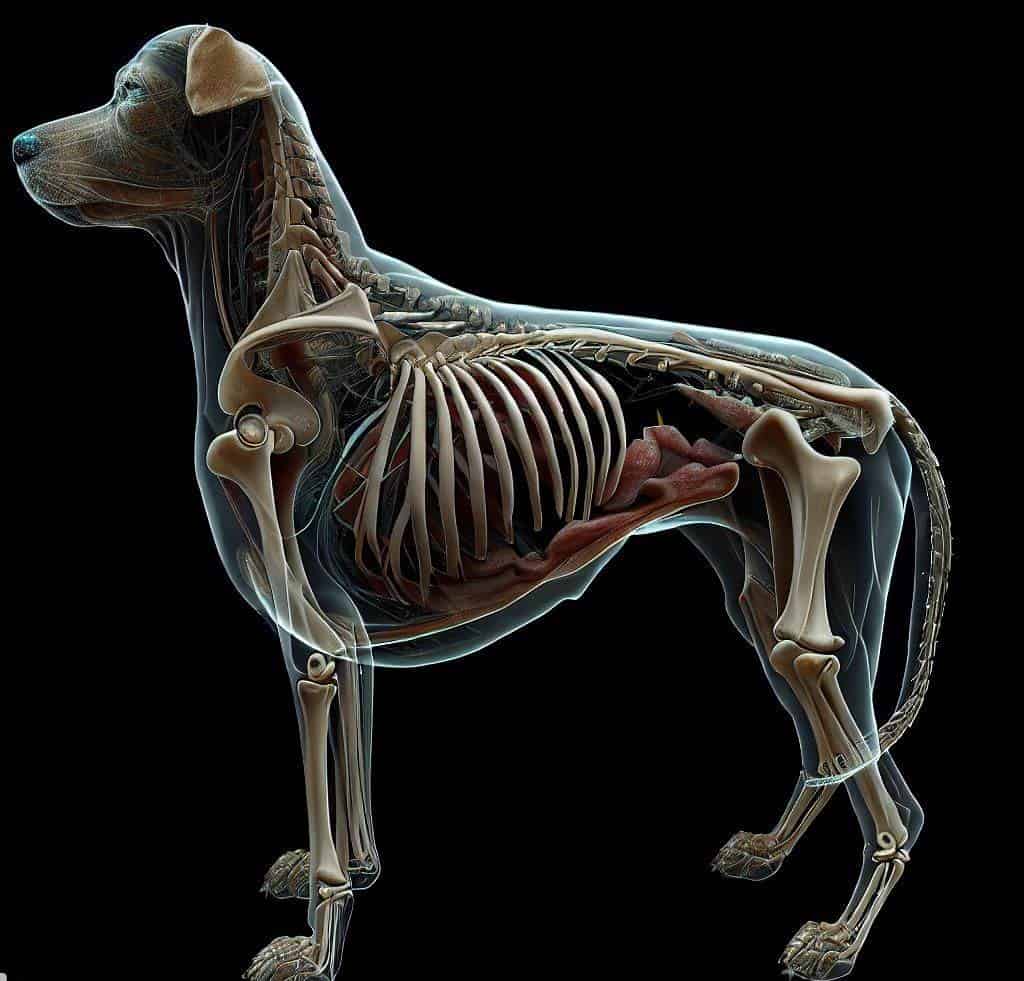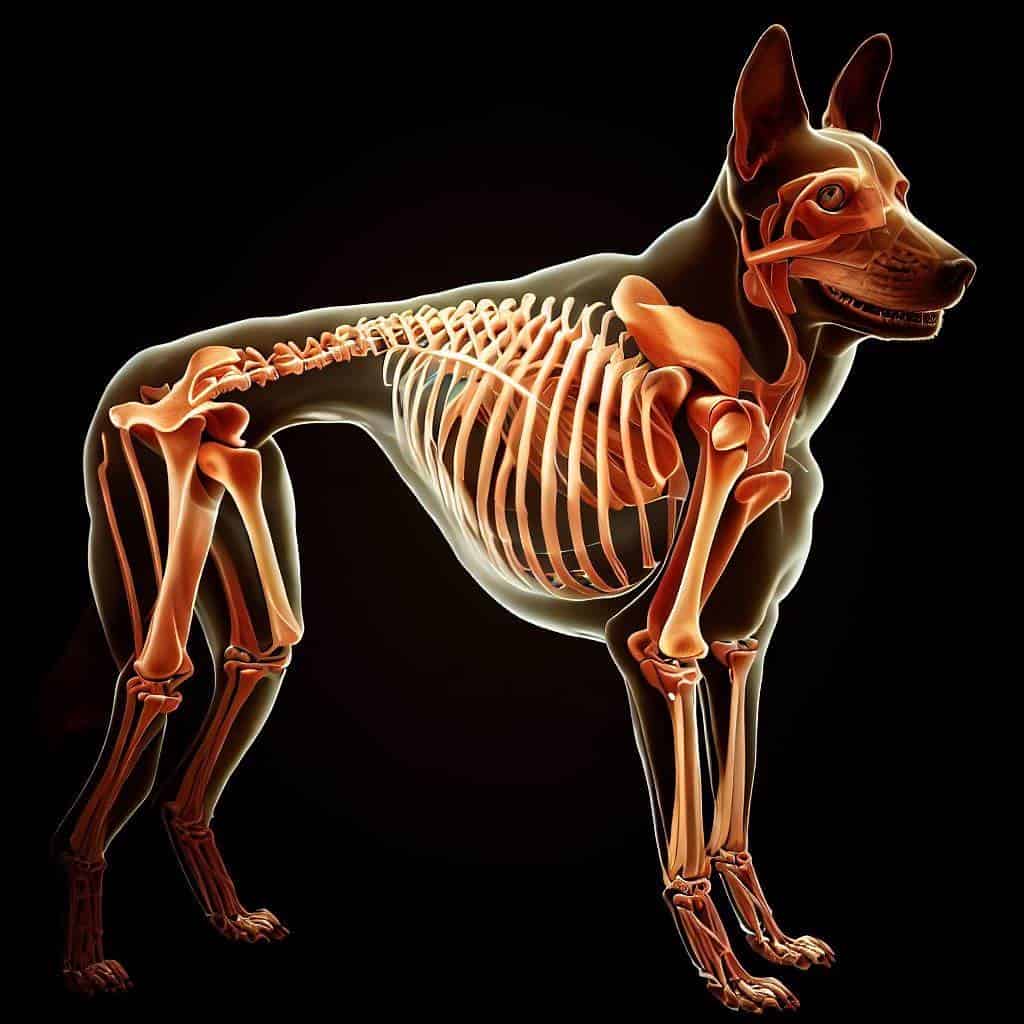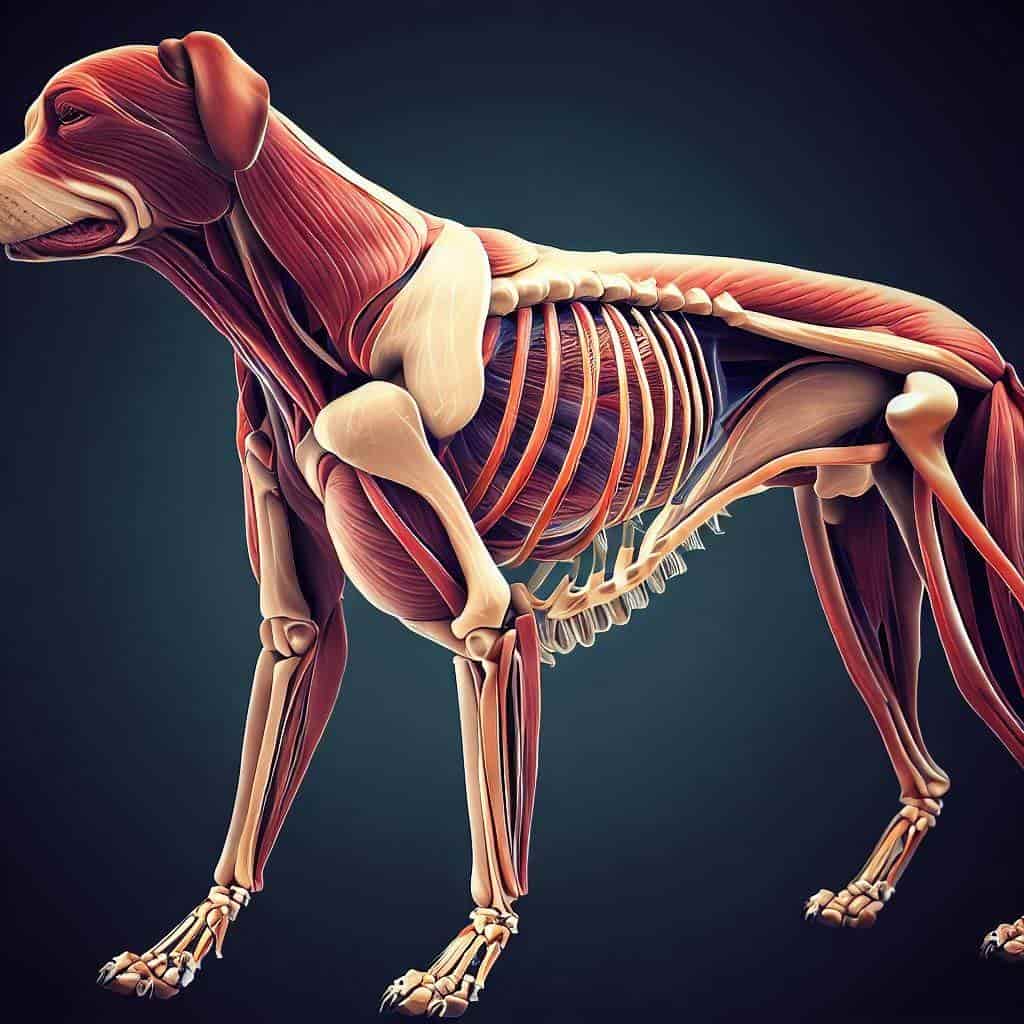Hey there, fellow dog lovers!
Get ready for an exciting adventure as we embark on a delightful exploration of the wonderful world of female dog anatomy.
We’ll uncover the intricate details of their physical structures, both on the outside and inside. And to add even more fun, we’ll also compare it to the male dog anatomy!
Understanding a dog’s physiology is absolutely essential for proud pet parents, breeders, or veterinarians alike.
So, get those tails wagging and let’s dive in!
Table of Contents
External Anatomy of Female Dogs
The female dog anatomy bears features both common and unique to her gender. Observing them helps in general care and detecting health abnormalities.
Here is a brief overview of the external anatomy of female dogs:
Head and Facial Features
A dog’s head houses the brain and an array of facial features that vary widely among breeds. A dog’s face often reflects its breed-specific role, such as retrievers with soft mouths, scent hounds with long nasal passages, or terriers with strong jaws.
Sensory Organs
The sensory organs include the eyes, ears, and the nose. The eyes provide visual information, while the ears, which come in various shapes and sizes, pick up auditory signals.
Dogs possess an extraordinary sense of hearing, capable of detecting frequencies well beyond human capabilities. The nose, a dog’s most potent sensory organ, gives them an extraordinary ability to detect odors, assisting in navigation, hunting, and detection work.
Body Structure and Proportions
Moving onto the body, the structure and proportions of a dog can tell you a lot about its breed and overall health. The backbone, running from the neck to the tail, provides structural stability.
The chest houses the heart and lungs, while the abdomen contains digestive and reproductive organs. The size, shape, and proportions of these areas are breed-specific and contribute to each breed’s unique silhouette.
Limbs, Paws, and Claws
A dog’s limbs, paws, and claws are marvels of evolutionary adaptation. Dogs usually have four toes on their rear paws and five on their front paws (including the dewclaw).
The structure of the limbs and paws allows for a range of movements, from rapid acceleration and deceleration to agile turns and jumps. The claws provide grip and are used for digging, holding objects, and self-defense.
Coat and Skin
Lastly, the coat and skin provide the first line of defense against external elements. A dog’s coat can be long or short, straight or curly, and come in a myriad of colors and patterns.
It offers protection from the elements and aids in regulating body temperature. While not visible, the skin underneath plays a crucial role in protecting against injury and infection.
Internal Anatomy of the Female Dog’s Body

Peeling back the layers, we encounter the awe-inspiring world of a dog’s internal structure. The complexity of dog internal anatomy ensures seamless function and survival.
Understanding the dog internal anatomy is crucial. Here are the key components of the internal anatomy of the female dog’s body:
Nervous System
The nervous system is at the heart of every dog’s interaction with the world. This intricate network of the brain, spinal cord, and peripheral nerves serves as the control center for your canine’s entire being.
Brain
The brain, smaller than a human’s yet equally complex, orchestrates everything from cognitive function to physical coordination. It controls behavior, decodes sensory input, and forms emotional responses.
Spinal Cord
Connected to the brain, the spinal cord serves as a conduit, transmitting vital information back and forth from the brain to the rest of the body. This crucial information superhighway ensures a seamless response to sensory stimuli.
Peripheral Nerves
Radiating from the spinal cord, the peripheral nerves link the central nervous system to the rest of the body. They gather sensory information and transport it to the brain, simultaneously delivering motor commands to every muscle.
Skeletal System

The skeletal system forms the structural foundation of your dog’s body. It provides support, facilitates movement, and protects vital organs.
The skeleton system consists of:
Skeleton and Bones
The skeleton, composed of bones varying in shape and size, holds the body together. Bones offer a rigid structure that muscles can pull against, enabling movement.
Joints
Joints, where two bones meet, provide the necessary flexibility for the skeleton, allowing for a wide range of motion. They are the pivot points for all your dog’s playful leaps and bounds.
Cardiovascular System
The cardiovascular system, a dynamic network of the heart, blood vessels, and lymphatic system, is responsible for transporting oxygen, nutrients, and other essential substances throughout the body.
Heart
The heart, a powerful muscular pump, pushes blood filled with life-giving oxygen and nutrients to every cell in your dog’s body.
Blood Vessels
Blood vessels – arteries, veins, and capillaries – form an intricate highway that carries blood from the heart to the body’s farthest reaches and back.
Lymphatic System
Working alongside the cardiovascular system, the lymphatic system plays a vital role in the body’s defense mechanism. It produces and circulates lymph, a fluid that carries immune cells to combat infections.
Respiratory System
The respiratory system, encompassing the nose, throat, and lungs, facilitates the exchange of oxygen and carbon dioxide – the process of respiration.
Nose
The nose, the entry point for air, not only plays a part in breathing but also houses an advanced olfactory system that gives dogs an impressive sense of smell.
Throat
The throat, or the pharynx, serves as the conduit for both air from the nose and mouth and food from the oral cavity.
Lungs
The lungs, where the vital gas exchange occurs, allow oxygen to enter the bloodstream and carbon dioxide to be expelled.
Digestive System
The digestive system, including the intestines, liver, stomach, and pancreas, processes food, extracts nutrients, and expels waste.
Stomach
The stomach serves as the first station in the digestion process, breaking down food in its acidic environment.
Intestines
The intestines, both small and large, extract nutrients from the broken-down food and pass them into the bloodstream.
Liver
The liver, the body’s biochemical laboratory, performs multiple functions, including detoxification, storage of vitamins and minerals, and production of essential proteins.
Pancreas
The pancreas produces digestive enzymes and regulates blood sugar levels by secreting insulin.
Urinary System
The urinary system made up of the kidneys and bladder, filters waste products from the blood and expels them as urine.
Kidneys
The kidneys perform the critical role of filtering out waste and excess substances from the blood.
Bladder
The bladder temporarily stores urine until it is expelled from the body.
Reproductive System
Finally, the reproductive system, exclusive to the female dog anatomy, includes the uterus, ovaries, fallopian tubes, and vulva.
Uterus
The uterus, or womb, is where puppies grow during pregnancy.
Ovaries
The ovaries produce eggs and secrete hormones that regulate the reproductive cycle.
Fallopian Tubes
The fallopian tubes, or oviducts, carry the eggs from the ovaries to the uterus.
Vulva
The vulva serves as the external part of the female reproductive system and the exit point for the birth canal.
Female vs. Male Dog Anatomy Comparison
Moving on, we juxtapose the female and male dog anatomy. While similar in many respects, subtle differences cater to their respective roles in reproduction.
Differences in Musculoskeletal Structure (Including Height & Weight)

Beginning with the musculoskeletal structure, male dogs typically have a larger build and heavier weight than their female counterparts. This isn’t a universal rule, as size can vary between breeds and even within individual dogs of the same breed.
However, generally, male dogs boast denser muscle mass, often resulting in a more robust physique. Male dogs’ increased muscle density and body mass also contribute to their strength, a trait evident in specific roles such as guarding or herding.
Differences in Skin & Coat Characteristics
The next contrast lies in the texture and characteristics of the skin and coat. Female dogs usually have softer, shinier coats, which change texture and density during different stages of their reproductive cycle.
Male dogs, on the other hand, often sport more substantial, mane-like fur around their necks, particularly in certain breeds. This difference in coat characteristics is more noticeable in long-haired breeds and less so in short-haired ones.
The appearance of External Structures such as Ears, Eyes, and Mouth

Subtle differences can also be observed in the external structures like the ears, eyes, and mouth. Generally, male dogs possess broader heads with larger eyes and ears.
These physical distinctions, while minor, may contribute to their overall physical appeal and breed-specific standards. However, it’s worth mentioning that these variations are often slight and may require a keen eye to discern.
The Difference in Internal Organs Size & Location
Venturing internally, we encounter similarities with a slight twist. The size and location of most internal organs in female and male dogs are generally similar.
The heart, lungs, kidneys, liver, and gastrointestinal system don’t usually exhibit noticeable size differences based on gender. However, one area where the distinction is unmissable is the reproductive organs.
Differences in Reproductive System Organs
The reproductive system houses the most evident differences between female and male dog anatomy. Male dogs possess two main reproductive organs: the testicles, responsible for sperm production, and the penis. They also have a prostate gland, an organ not found in females.
In contrast, female dogs have ovaries for egg production, a uterus for the gestation of puppies, and a vulva. The female reproductive organs also undergo significant changes throughout the different stages of the reproductive cycle, notably during heat and pregnancy.
Health Considerations
Knowledge of dog organ anatomy equips us to monitor and maintain their health. Both general and gender-specific health concerns warrant attention.
Gender-Specific Health Concerns
Starting with gender-specific health issues, female dogs may encounter complications related to their heat cycles, pregnancy, or birthing. Additionally, they face the risk of mammary tumors, especially if not spayed.
Pyometra, a potentially life-threatening uterus infection, is another concern specific to unspayed females.
Male dogs, particularly unneutered ones, can suffer from testicular or prostate diseases. Moreover, certain breeds may be predisposed to gender-specific health issues. For instance, large-breed male dogs are more prone to certain orthopedic conditions than females.
Specific System Disorders
Moving to system-specific disorders, these can afflict dogs irrespective of their gender.
- The cardiovascular system can fall prey to ailments such as heart disease and hypertension. Cardiomyopathy, a heart muscle disease, is commonly observed in certain breeds.
- The skeletal system can also encounter its share of troubles. Dogs, especially larger breeds, are susceptible to arthritis and hip dysplasia. Osteosarcoma, a type of bone cancer, can also affect dogs.
- Respiratory disorders such as pneumonia, bronchitis, and collapsing trachea can significantly impact a dog’s quality of life. Similarly, conditions like pancreatitis, gastritis, and intestinal blockages can disrupt the digestive system.
- Diseases of the urinary system, such as kidney disease and urinary tract infections, are relatively common in dogs. Chronic kidney disease is notably prevalent in older dogs.
- Finally, neurological disorders can also afflict our canine companions. Seizures, intervertebral disc disease, and cognitive dysfunction syndrome (akin to Alzheimer’s in humans) are examples of neurological issues that can affect dogs.
Conclusion
In conclusion, understanding the female dog’s external and internal anatomy contributes to her well-being and longevity. It allows us to provide optimal care, spot health issues early, and understand gender-specific characteristics.
With this newfound knowledge about female dog anatomy, we can better appreciate our canine companions and contribute more effectively to their healthy and happy lives.
FAQs
What is the average lifespan of a female dog?
On average, female dogs live between 10 to 13 years, although this can vary depending on breed, size, overall health, and lifestyle. Proper nutrition, regular exercise, and routine veterinary care can help extend their lifespan.
How often do female dogs go into heat?
Female dogs usually go into heat, or estrus, twice a year, with each heat cycle lasting approximately three weeks, although this can vary between individual dogs and breeds.
What role does the skeletal system play in a dog internal anatomy?
The skeletal system serves as the body’s structural framework. It also protects internal organs and helps with movement by providing anchor points for muscles to attach to bones.
Can a female dog get pregnant while she is still nursing puppies?
Yes, a female dog can potentially get pregnant while nursing puppies as nursing may not completely suppress heat cycles. It is advisable to separate the female from intact males if you want to prevent additional pregnancies.
What is the importance of understanding a dog organ anatomy?
Understanding a dog’s organ anatomy, including its skeletal system, is crucial for its overall health care. It can help in early diagnosis of diseases, injury treatment, and even in understanding your dog’s behavior and physical capabilities.

